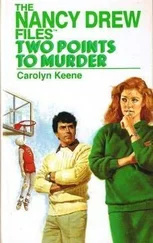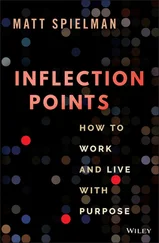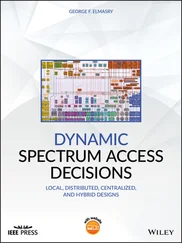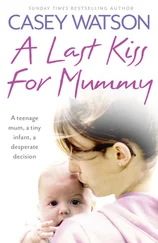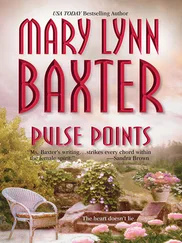The third and most aggressive option was to employ cruise missiles, bombers, and boots on the ground. This was mostly a theoretical option; the military would have to develop the details from scratch.
General Shelton stressed that it would take time and delicate diplomacy to insert our forces into a mountainous, landlocked country. We would need basing rights, overflight permission, and search-and-rescue capability—not to mention good weather and good luck.
A wide-ranging discussion followed. George Tenet warned that a retaliatory strike on our homeland was likely. “We can’t deter them if they’ve already planned a second round,” he said. “I expect they have some chemical and biological weapons,” he added ominously.
Dick Cheney worried that the war could spill over into Pakistan, causing the government to lose control of the country and potentially its nuclear arsenal. As Deputy National Security Adviser Steve Hadley rightly put it, that would be “the nightmare scenario.”
At one point, Deputy Defense Secretary Paul Wolfowitz suggested that we consider confronting Iraq as well as the Taliban. Before 9/11, Saddam Hussein’s brutal dictatorship was widely considered the most dangerous country in the world. The regime had a long record of supporting terrorism, including paying the families of Palestinian suicide bombers. Saddam’s forces fired routinely at American and British pilots patrolling the no-fly zones imposed by the United Nations. And Iraq had defied more than a decade’s worth of UN resolutions demanding that it prove it had destroyed its weapons of mass destruction.
“Dealing with Iraq would show a major commitment to antiterrorism,” Don Rumsfeld said.
Colin cautioned against it. “Going after Iraq now would be viewed as a bait and switch,” he said. “We would lose the UN, the Islamic countries, and NATO. If we want to do Iraq, we should do it at a time of our choosing. But we should not do it now, because we don’t have linkage to this event.”
George Tenet agreed. “Don’t hit now. It would be a mistake,” he said. “The first target needs to be al Qaeda.”
Dick Cheney understood the threat of Saddam Hussein and believed we had to address it. “But now is not a good time to do it,” he said. “We would lose our momentum. Right now people have to choose between the United States and the bad guys.”
I welcomed the vigorous debate. Listening to the discussion and divergent views helped clarify my options. I wasn’t going to make a decision on the spot. That would come the next day.

Sunday, September 16, was a day of reflection. Laura and I went to services at Camp David’s beautiful Evergreen Chapel. Started during the Reagan administration and finished during Dad’s, the chapel was a special place for my family. The first wedding performed there was between my sister Doro and her fine husband, Bobby Koch.
At 10:00 a.m. that first Sunday after 9/11, late summer light streamed through the serene woods and into the chapel. Navy and Marine Corps personnel and family members joined us in worship, as did members of the national security team who had stayed over from the meetings the day before.
Camp David was blessed to have a fine pastor, Navy Chaplain Bob Williams. His sermon that Sunday was touching and comforting. He asked the questions so many of us had struggled with: “Why? … How could this happen, God?”
Bob said the answer was beyond our power to know. “Life is sometimes a maze of contradictions and incongruities,” he acknowledged. Yet we could take comfort in knowing that God’s plan would prevail. He quoted a passage from St. Ignatius of Loyola: “Pray as if it all depends upon God, for it does. But work as if it all depends upon us, for it does.”
After the service, Laura and I boarded Marine One for the flight back to Washington. By that afternoon I had reached one of the defining decision points in my presidency: We would fight the war on terror on the offense, and the first battlefront would be Afghanistan.
My decision was a departure from America’s policies over the past two decades. After Hezbollah terrorists bombed our Marine barracks and embassy in Lebanon in 1983, President Reagan withdrew our forces. When terrorist warlords in Somalia shot down an American Black Hawk helicopter in 1993, President Clinton pulled our troops out. In 1998, al Qaeda’s bombing of two American embassies in East Africa prompted President Clinton to launch cruise missiles at al Qaeda sites in Afghanistan. But the training camps had been largely abandoned, and the long-distance strike came across as impotent and ineffectual. When al Qaeda blew up the USS Cole off the coast of Yemen, America mounted almost no response at all.
My predecessors made their decisions in a different era. After al Qaeda killed nearly three thousand people in the United States, it was clear the terrorists had interpreted our lack of a serious response as a sign of weakness and an invitation to attempt more brazen attacks. Al Qaeda messages frequently cited our withdrawals as evidence that Americans were, in the words of bin Laden, “paper tigers” who could be forced to “run in less than twenty-four hours.”
After 9/11, I was determined to change that impression. I decided to employ the most aggressive of the three options General Shelton had laid out. Cruise missile and manned bomber attacks would be part of our response, but they were not enough. Dropping expensive weapons on sparsely populated camps would not break the Taliban’s hold on the country or destroy al Qaeda’s sanctuary. It would only reinforce the terrorists’ belief that they could strike us without paying a serious price. This time we would put boots on the ground, and keep them there until the Taliban and al Qaeda were driven out and a free society could emerge.
Unless I received definitive evidence tying Saddam Hussein to the 9/11 plot, I would work to resolve the Iraq problem diplomatically. I hoped unified pressure by the world might compel Saddam to meet his international obligations. The best way to show him we were serious was to succeed in Afghanistan.
The next morning, I convened the National Security Council in the Cabinet Room. “The purpose of this meeting is to assign tasks for the first wave of the war on terrorism,” I said. “It starts today.”

Shortly after 9/11, Denny Hastert, the reliable and steady speaker of the House, had suggested that I address a joint session of Congress, as President Franklin Roosevelt had done after Pearl Harbor. I liked the idea but wanted to wait until I had something to say. Now I did. We scheduled the speech for September 20.
I knew the American people had a lot of questions: Who attacked us? Why do they hate us? What will the war look like? What is expected of the average citizen? The answers would form the outline of my address.
I decided to invite a special guest to join me for the speech, British Prime Minister Tony Blair. A few hours before I left for Capitol Hill, Tony came to the White House for dinner. I pulled him into a quiet corner of the State Floor to give him an update on the war plans, including my decision to deploy ground troops. He reiterated that Great Britain would be at our side. America’s closest ally in the wars of the last century would be with us in the first war of a new century.
As the moment to deliver the speech approached, Tony said, “You don’t seem the least bit nervous, George. Don’t you need some time alone?” I hadn’t thought about it until he mentioned it. I didn’t need to be alone. I had taken time to make a careful decision, and I knew what I wanted to say. Plus, I appreciated the company of my friend.
Читать дальше





